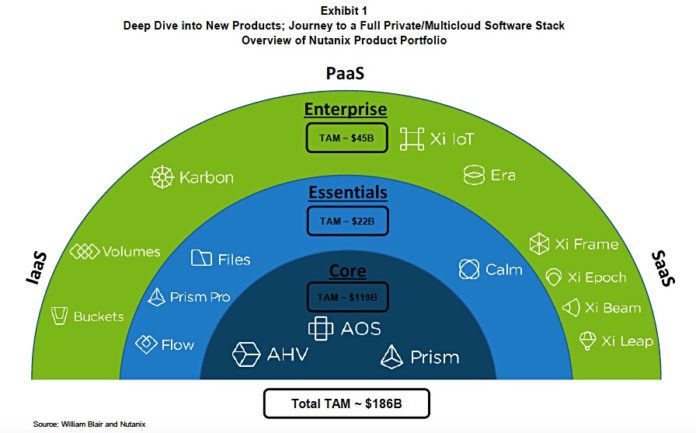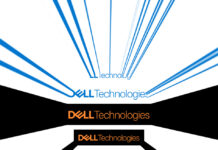Jason Ader, analyst at the investment bank William Blair, has produced a useful Nutanix review for subscribers. He delivers a coherent and useful deep dive into Nutanix’s products and strategies.
Nutanix aims to expand from its core hyperconverged infrastructure (HCI) starting point to become a full stack supplier in a hybrid multi-cloud world. Ader thinks this is the right strategy to deliver sustainable differentiation in the HCI market “and fight against the persistent pull of the public cloud”.
Nutanix’s product set is divided into three groups:
- Core and its basic HCI technology
- Essentials add-on features to help customers build a file-based automated private cloud
- Enterprise products to support multiple-cloud services, including containerisation, block and object storage
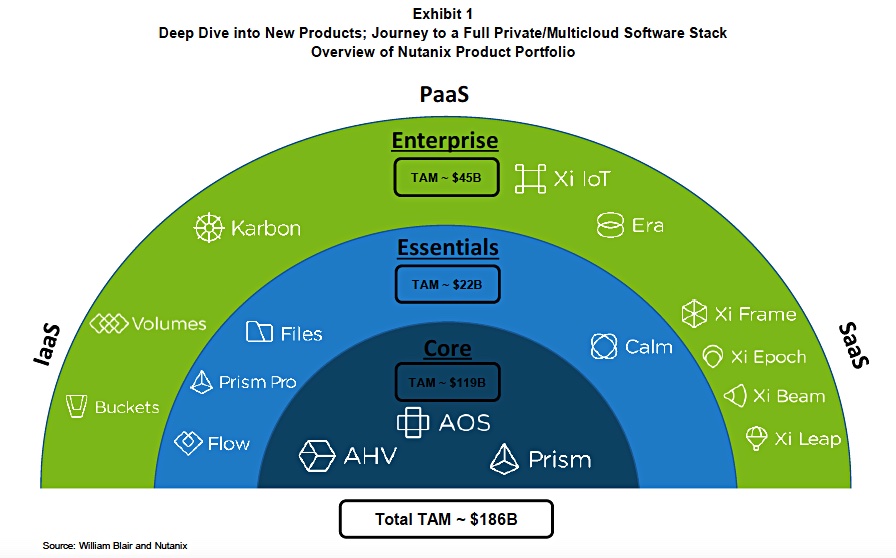
The diagram below positions them and their component products:
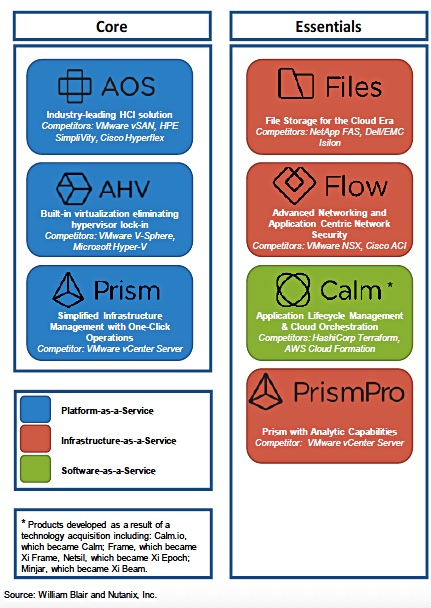
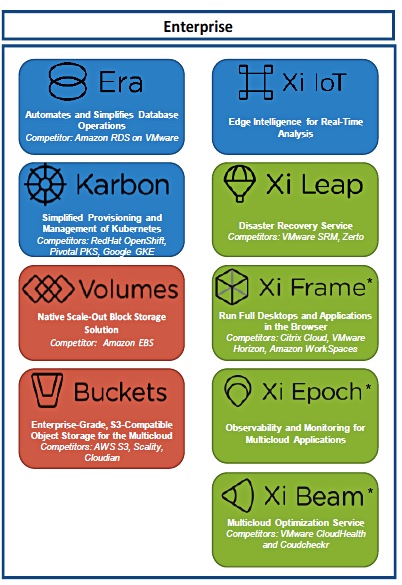
There is a separate storage offerings diagram:
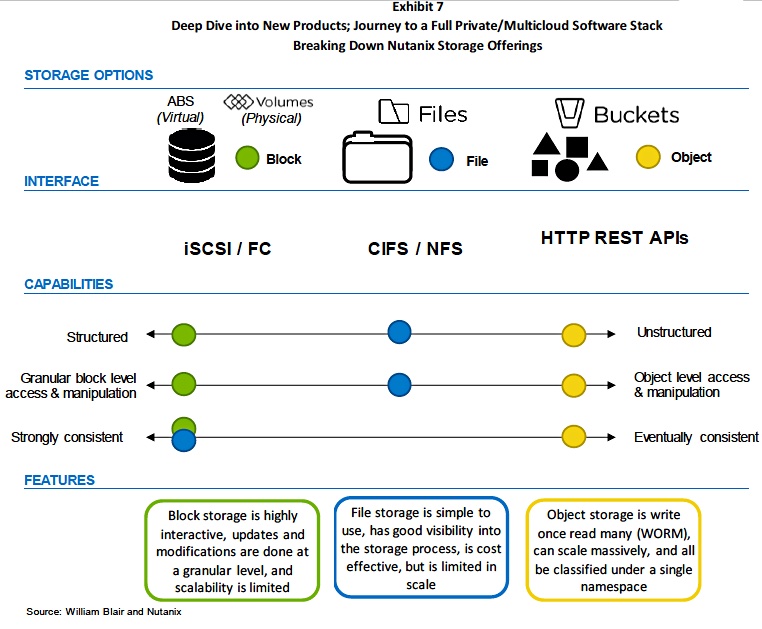
Multi-cloud control plane
Nutanix has built a multi-cloud control plane to enable customers to move applications between on-premises data centres and the public clouds and vice versa.
Move is the first iteration of Nutanix application multi-cloud mobility tool. This is a rebranding of Xtract for VMs, a tool for migrating Hyper-V and VMware ESXi virtual machines to Nutanix’s AHV hypervisor. V3.0 Move adds the migration of AWS EC2 VMs to AHV and the ability for Move services to run as Docker containers.
Nutanix will add the ability to migrate from AHV to AWS, with Move automatically mapping AHV VMs to the closest EC2 instance type, based on the AHV VM’s size. Move is available as a plug-in to Beam and Calm as part of an operations suite.
The overall Nutanix product set and the company’s strategy represents an audacious and far reaching bet by that it can create a full stack for a hybrid, multi-cloud world through organic development and acquisition. No other HCI vendor has an equivalent strategy.B


